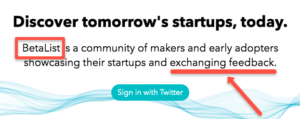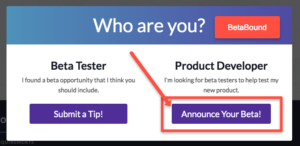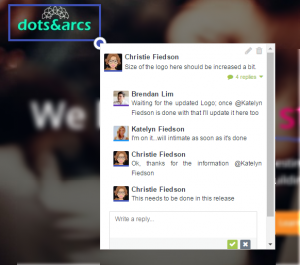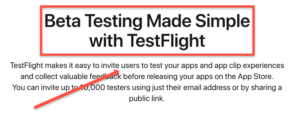Complete Beta testing faster with zipBoard
Request a personalized demo to learn how zipBoard can make your product testing more efficient

Table of Contents
ToggleAre you excited about the new software product you’ve developed and can’t wait to release it for sale? Hold on one moment.
You can’t launch it without performing necessary beta testing after the alpha testing phase.
Alpha testing is what you did in-house during development. The next step is beta testing where you’ll test how well everything works with real users. Beta testing your product makes sure that you can provide an outstanding user experience after its official release.
Quality assurance: You need to ensure high quality at every turn of software development. Releasing a product too soon that doesn’t work as promised isn’t worth the bad PR that often results. Putting the product through rigorous testing prior to submitting it to the app stores makes sure that all of your hard work pays off.
Discover bugs and security issues: The users that take part in the beta testing phase will help you uncover bugs and threats to security. Fixing those bugs and implementing virus protection helps provide a seamless experience for future paying customers.
Create product awareness: Getting your software in front of a focus group created by your target users helps create an initial buzz. Think of it as pre-marketing to help build momentum for the official release date.
Excellent performance: Things can go wrong if your product isn’t tested on multiple platforms. Use beta testing as a way to know that you’re delivering suburb speed and performance.
Improve Usability: Although it’s not possible to test every potential usability during alpha testing, you can still test your app with a number of real users and usability testing tools so that you discover which devices cause negative usability experiences.
The success of your web application relies on a thorough and effective beta testing phase. This comprehensive guide walks you through the intricate process of beta testing, giving you the key elements from planning to feedback analysis
DownloadDon’t make the mistake made by many companies, where the beta testing process lacks a clear strategy. Here are important factors to consider when implementing this into your business roadmap.
To help out with deciding whether beta testing is the right move for your development process in relation to your other priorities, airfocus has a few roadmap templates you can use.
Not sure about what your plan is? Then the safest option is to enter beta testing only after the product is ready for release.
All intended functionality should be completed and ready for testing. There’s no point in entering beta testing if your users can’t experience all basic functions and provide feedback.
Develop a plan and make sure all team members understand areas such as:
Prevent security leaks by getting nondisclosure agreements (NDAs) and beta test participation agreements ready. Never use beta testers unless they’ve signed NDAs that prevent them from revealing sensitive product information prior to your launch.
Think through overall needs so that you can identify testing platforms that fit your process best. For instance, if you’ve created an app for iOS, then you need to find platforms that can help you test older and newer models of:
You also need to test how well your product works on all the various browsers that your target market uses.
Some testing platforms help test on either Android or iOS. Other testing platforms make it easy to test on both types of operating systems.
Do you need platforms that allow for remote accessibility? Do you need to think about community support? Now is the time to figure out your plan for platform selection.
Finding 50-300 beta testers to work with is a good target goal. It takes these types of numbers to provide the volume of constructive feedback that you need.
Does your website benefit from solid SEO traffic that helped you build an email list of “best fit” users? Email them and ask them to help you with the testing phase.
Select a user segment that fits your product and reach out. If you don’t have enough users yet, it may make sense to hire college students to help.
According to Ron, a marketing professor at NLU, there are a lot of different online jobs for college students available, but beta testing is perfect because it’s more than likely a part-time gig that they can do in between studying.
Other websites to target include:

The above websites offer testing as a service and provide beta testers when you don’t have a list of your own.
Use your social media audience as well. Make contact with engaged followers on Facebook and Twitter. Create and publish engaging social media graphics about your software.
A quality strategy is using Facebook ads to target beta testers if your social media following doesn’t provide results organically.
You could also host a webinar and invite your intended audience to attend a session where you’ll explain how your service works in addition to requesting testers.
Beta and startup directories exist where you can find early adopters and tech-savvy side hustlers who love to provide product feedback.
The following resources should yield good results:

What if you’re a B2B software company looking to grow? Social media is a great place to find potential customers for your business, but where do you start?
If you’re struggling to get traffic to your website, try using Twitter and Facebook. Meanwhile, LinkedHelper can significantly enhance your LinkedIn prospecting efforts, offering a powerful way to generate new leads by establishing personalized connections with potential clients.
And don’t forget to look at your personal sphere of influence if you’re still looking for beta testers. Do you and your team have personal connections you can reach out to and ask for testing help from?
Grab your free copy to learn how to increase ROI, reduce maintenance costs, or increase customer satisfaction on your product/service.
DownloadIt’s now time to begin the testing phase. Use one of the following distribution tools to shift product beta testing into the action process.


The first type of feedback is one of the most important: Bug reports.
It’s vital that you uncover and get rid of any bugs that went unnoticed during the alpha testing phase. Use the reports that come in around this area to eliminate bugs so that the overall user experience is improved.
Encourage feature improvement suggestions and new feature requests from beta testers. These valuable insights help improve the product and uncover ideas that often go unnoticed until real users feel that something is missing.
Use journaling to allow testers to provide customized feedback about their experience using the software. Ask them to write down their daily use experiences in real-time so that these thoughts can be used by beta managers to make improvements.
Allow beta testers a forum atmosphere so that they can discuss what they’re experiencing together. You’ll gain valuable insight into something exciting a user discovered about your software and then even more understanding as other testers chime in about that topic.
The same thing happens when a negative experience occurs. Don’t be afraid to let testers discuss negative features so that you can fix them prior to the product’s official release.
Provide incentives to beta testers so that they feel good about taking time out of their lives and putting in the effort to help you with making your product the best it can be.
Reward them with:
Acknowledge their efforts and express your gratitude for their input and hard work on your behalf. Remembering to reward beta testers goes a long way toward building brand loyalty.
However, it’s often better to offer these incentives and rewards at the end of the process so that people don’t join the project without the intention of providing honest feedback.
Keep the reward a secret so that you get true beta testers and avoid attracting people who only want the incentives. If you announce rewards for participation, then it’s likely that people will overlook problems and give your software high praise as they anticipate getting something in return for half-hearted feedback.
Once you announce the reward to beta testers who participated based on the passion for your product idea, however, you’ll leave a great impression on your brand.
Analyze the data as it flows in. Observe where the patterns are, discover glitches and crashes, and start making improvements to the software.
Use resources such as Apple Crash Reports, Firebase, Google Analytics for iOS, and Parse Analytics to collect crash reports and other analytics in your efforts at getting a clear picture of where problems exist.
Firebase, for instance, will provide crash logs that reveal what led to the shutdown. Analyze the results and act upon them as you continuously improve your software product.
The end result will be a better product and an improved user experience that gets you closer to a successful launch and positive product reviews.
If you do beta testing correctly, then you’ll create an audience around the product at the same time that you’re getting valuable feedback. Remember that it’s more effective to find out what’s wrong when users know it’s only a testing phase. They’ll be more forgiving about flaws inside this environment.
Don’t forget to pay close attention to all the steps described above and work through them methodically. Plan out your beta test, choose platforms that fit your product, select beta testers wisely and implement the needed improvements.
Finally, make sure that all beta testers are added to your email subscriber list. Now you can let them know when the product officially launches or when new updates get released.
 Ricky is a teen entrepreneur and founder of RickyWang.com. He provides digital resources to help people start a blog, become smarter marketers, and build successful online businesses. Ricky also recently founded AppSurp, a great place to go to find the best growth hacking software and applications. You can connect with him on Twitter and LinkedIn.
Ricky is a teen entrepreneur and founder of RickyWang.com. He provides digital resources to help people start a blog, become smarter marketers, and build successful online businesses. Ricky also recently founded AppSurp, a great place to go to find the best growth hacking software and applications. You can connect with him on Twitter and LinkedIn.
Request a personalized demo to learn how zipBoard can make your product testing more efficient
©️ Copyright 2023 zipBoard Tech. All rights reserved.